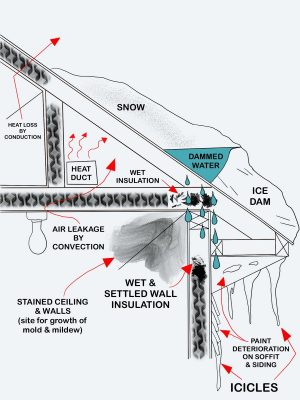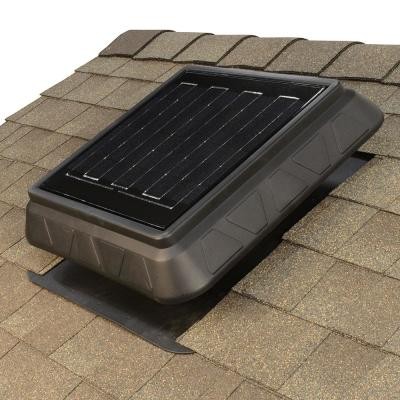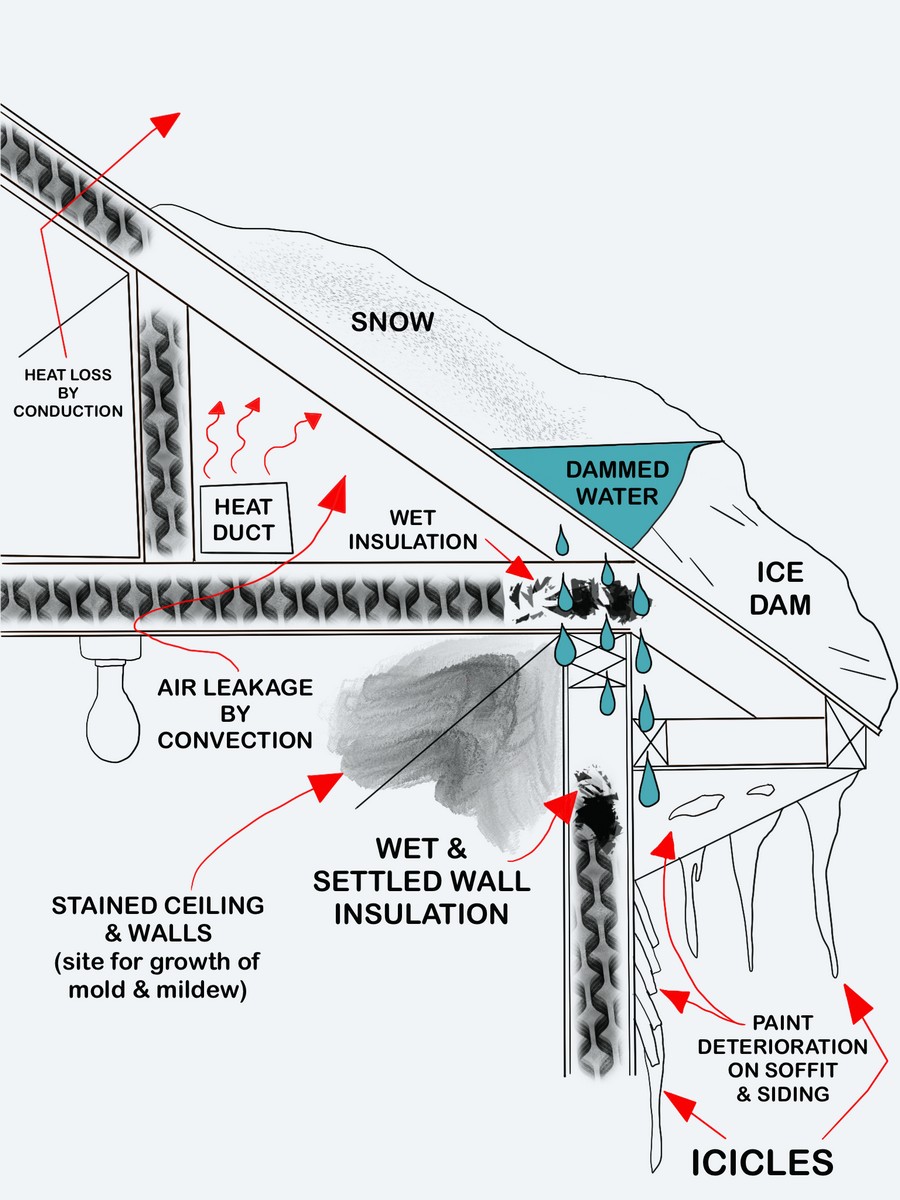How do attic fans work tips, Online property advice, House ventilation guide
How Do Attic Fans Work: Attic Ventilation for Whole-House Comfort and Efficiency
August 18, 2021
Correctly rated and installed, attic fans can be among the most effective attic ventilation solutions available to homeowners. And, effective attic ventilation is critical to the comfort, structural integrity, and thermal efficiency of the whole house.
That said, attic fans are not simple plug-and-play devices requiring only basic capacity calculations. Their efficiency relies on a fine balance between their ventilation input and other structural roofing elements. Not the least of which is an adequate balance of unobstructed roof venting. Simply put, as uncomplicated as they are, correctly sizing and installing attic fans can be a fairly tricky exercise.
That should not be a limiting factor though. Attic fans, and in particular solar attic fans are still extremely beneficial and cost-effective solutions in any home ventilation scenario.
Why ventilate your attic in the first place?
Attic or ceiling spaces act as thermal barriers in homes, especially those with pitched roofs. When they are correctly managed, they can help cool the home in hot weather and keep it warm in winter. On the other hand, when attics are not well insulated and ventilated, thermal losses mount quickly.
This can completely confound all climate control efforts, sending air conditioning and air conditioner maintenance costs spiraling out of control. Not to mention miserable living conditions and, at worst, potentially severe structural damage.
Installing a conventional or solar fan for the attic space in your home is a cost-effective, simple solution to these problems.
Mold, mildew, and ice dams
And these issues are not only of relevance in hot weather. During winter, heat entering the stagnant, colder attic space from the rest of the home can create significant condensation problems. This condensation can eventually damage the roof structure or lead to the growth of mold and mildew in the attic.
The same process can cause localized melting of snow on the roof with associated formations of ice dams. Ice damming can severely damage your roof, soffits, and walls if not addressed quickly.

Courtesy: University of Minnesota Extension
How can attic fans prevent these issues?
By constantly replacing the air in the attic with air from outside the home, excess hot stale air is removed in hot weather. If the attic fan is controlled by a humidistat controller, it will automatically start up and eliminate excess moisture-laden air in winter.
This can improve the comfort in the living space of the home. In addition, a significant reduction in energy bills and less required air conditioner maintenance are extra benefits. Also, the installation of solar attic fans has the potential to prevent extremely expensive, unnecessary repairs to the home. Not to mention making a positive contribution to a reduced energy footprint.
How do attic fans do this?
Industry standards maintain that the interior air volume of an attic should be replaced 6 to 8 times per hour. In hot or cold weather, this ensures the elimination of excess heat and moisture by passive or forced attic ventilation.
Attic fans replace the air in your attic by drawing stagnant air out and fresh air in through the roof vents. It is a simple process but does require some careful planning and fan sizing. Oversized fans can create negative pressure and partial vacuums in the attic that can be equally dangerous. The same goes for the roof venting intake capacity that has to be matched to the fan’s extraction figures.

Typical 1,500 CFM solar attic fan. image Courtesy Home Depot
Sizing an attic fan
All attic fans are rated according to the amount of hot air they can move. These ratings are expressed in cubic feet per minute or CFM. To correctly calculate the size and number of attic fan units required, you’ll have to work out the volume of your attic.
This is done by multiplying the length, width, and wall height of the space. For instance, a 60 x 30-foot attic with 7-foot walls would have a volume of 12, 600 cubic feet (ft³). If we take 7 changes per hour as an average, you would have to move 88, 200 ft³ per hour.
Attic fan sizing examples
Let us assume you choose to use a 1,200 CFM attic fan. The fan carries a per minute rating, so to work out its hourly capacity you should multiply 1,200 by 60. This would return an hourly capacity of 72,000 ft³. This is slightly below the volume of the attic which is fine as you don’t want to create a vacuum.
Now, what if you chose to use a 700 CFM attic fan that would move 42,000 ft³ per hour. Then 2 fans would be almost spot on at 84,000 ft³ in total.
You can also use a less complex floor area calculation to work out attic fan size for your house. This works by using a standard of 700 CFM for each 1,000 ft² of attic floor space. This will return the size of fan you’ll need to use.
If we use the previous example the figures look like this. The floor area is 60 x 30 or 1,800 ft² which divided by 1,000 gives you 1.8. Now multiply the 1.8 by 700 and you’ll get a required fan size of 1, 260 CFM and 75, 600 ft³ per hour. This is not as scientific as the volume method but still returns figures that are pretty close.
Roof venting for adequate attic ventilation
If you are ventilating your attic space you need to have enough net free air intake from the soffit vents. This prevents the vacuum effect we discussed earlier and is calculated by dividing the total CFM fan rating by 300. In the previous example, this would equate to around 4 ft² of unobstructed vent area for the 1,200 CFM fan. The 2 x 700 CFM fans would need 4.7 ft² of vent area.
How do attic fans work conclusion
No more hot air – house ventilation advice
The humble solar attic fan is undoubtedly one of the most effective ways of ventilating any attic. Passive ventilation does work to remove air from the attic, and in some cases, it works very well. The powered attic fan, on the other hand, simply cannot be beaten for sheer energy-efficient punch. And, of course, a solar attic fan piles environmental responsibility and cost savings onto the already impressive heap of benefits.
Installing an attic fan is actually an investment more than a simple ventilation tool. Reduced air conditioning costs, reduced structural damage, and increased living space comfort alone is well worth the cost of the fan. Not to mention the boost in your property value and green energy credibility!
Comments on this guide to How do attic fans work: ventilation for Whole-House Comfort and Efficiency guide tips article are welcome.
Building Solar Panels
Solar Panels Posts
Architects getting more involved in solar power design
5 mistakes to avoid with a commercial solar package
Green building best practices for energy saving
How to maintain solar power generator for home
Building Articles
Power Wing, Bangkok, Thailand
Design: Openbox Group and Openbox Architects

photo : Panoramic Studio
Car Parking Solar Roof Bangkok
New Homes
Design: Efficiency Lab for Architecture

photograph : Josh Johnson
Telluride Glass House
Comments / photos for the How do attic fans work guide: house ventilation tips page welcome





